History of Pereslavl-Zalessky
12th Century
Foundation

Pereslavl-Zalessky was founded in 1152 by Prince Yuri Dolgoruky who was at the time prince of Rostov-Suzdal. The city was originally called Pereyaslavl-Zalessky as it was named in honour of the important Kievan Rus city of Pereyaslavl which is now located in Ukraine. The word 'Zalessky' was added to distinguish the city from the original Pereyaslavl and means 'beyond the forest', as it was located in the forest lands of present day north-western Russia then known as Zalesye. Over time the name of the city mutated into Pereslavl-Zalessky as it is known today. Upon founding the city, Yuri Dolgoruky established a kremlin in the form of a wooden fortress on an earthen mound. The Transfiguration of the Saviour Cathedral, which survives to this day, was built inside the kremlin and completed in 1157.
St Nikita the Stylite of Pereslavl-Zalessky
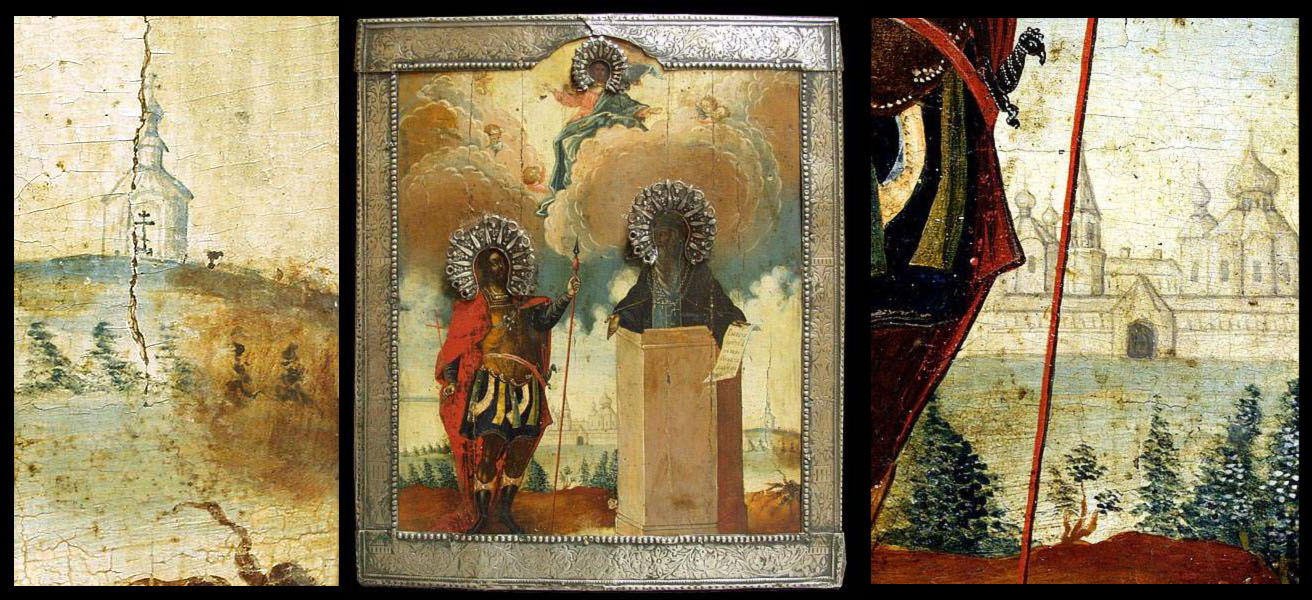
The Nikitsky Monastery was also founded in the 12th Century. Although it consisted only of wooden buildings it became famous because of the holy feats of a hermit there who was canonised as St Nikita the Stylite or St Nikita of Pereslavl-Zalessky. Having led a sinful youth, Nikita became a monk at the monastery which would later bear his name. However this was not enough for Nikita who decided to chain himself on top of a pillar where he would remain in prayer. Nikita remained in his pillar until he was killed in 1186 by robbers who mistakenly believed his chains were made out of silver.
13th Century
Pereslavl-Zalessky Principality and Aleksandr Nevsky
In 1207 Pereslavl-Zalessky became the centre of a principality when Grand Prince Vsevolod the Big Nest of Vladimir gave it to his son Yaroslav. In 1221 Prince Yaroslav's son Aleksandr was born in Pereslavl-Zalessky. Aleksandr would go on to become Pereslavl-Zalessky's most famous son: Russian hero and saint Aleksandr Nevsky. During the Mongol-Tatar Invasion in 1238, Prince Yaroslav was in Kiev as he was by now also grand prince of Kiev. Pereslavl-Zalessky was able to hold out for five days until it fell to the Mongol-Tatars. In 1246 Yaroslav died and Pereslavl-Zalessky was inherited by his son Aleksandr Nevsky who was at that time also prince of Novgorod. After Aleksandr’s younger brother Andrey usurped the Vladimir throne from him, Aleksandr went to the Golden Horde to plead his case. Sartaq, the son of the khan of the Golden Horde and an ally of Aleksandr, sent a Tatar army against Andrey headed by the commander Nevryui in 1252. Andrey met the army outside Pereslavl-Zalessky and was defeated. Nevryui’s troops went on to sack Pereslavl-Zaleskky.
Prince Dmitry of Pereslavl-Zalessky
Upon Aleksandr's death in 1263, his young son Dmitry became prince of Pereslavl-Zalessky and although he would go on to be prince of Novgorod and grand prince of Vladimir in 1276 he is often referred to as Dmitry of Pereslavl-Zalessky as that city served as his base where he fled to during his troubled reign at a time of Mongol-Tatar intervention and internecine wars. The internecine war between Dmitry and his brother Andrey, known as Andrey of Gorodetsk, brought great destruction to Rus lands as Andrey made use of Tatar troops to gain back the Vladimir throne in 1281. Pereslavl-Zalessky, as Dmitry’s base, was hit especially hard being sacked in 1281 and then again in 1282. Dmitry regained the Vladimir throne with the help of a rival Golden Horde faction in 1283, but in 1293 he reached an agreement with Andrey, again supported by a Tartar army, to give up Vladimir provided he could retire to Pereslavl-Zalessky. Meanwhile Andrey had already given the city to Prince Fyodor the Black of Yaroslavl. Andrey ordered Fyodor the Black to leave Pereslavl-Zalessky and in doing so in 1294 he set it alight. Dmitry died on the way back to Pereslavl-Zalessky.
14th Century
Incorporation into Moscow
Dmitry was succeeded in Pereslavl-Zalessky by his son Ivan, although Andrey of Gorodetsk still had his eyes set on the city. When Ivan was away in the Golden Horde Andrey made an unsuccessful attempt to take the city. During the Congress of Dmitrov in 1301, Ivan sided with Prince Daniil Aleksandrovich of Moscow, to whom he left the Pereslavl-Zalessky Principality upon his death without heir in 1302.
New Monasteries
As part of the Moscow Principality, the city was ruled by a viceroy (namestik) from Moscow, in 1304 it was Prince Ivan, brother of Prince Yuri Daniilovich of Moscow (who later himself became prince of Moscow and was known as Ivan Kalita). In the same year troops from Tver led by the famous commander Akinf Gavrilovich marched on Pereslavl-Zalessky to take the city from the Moscow Principality. Prince Ivan was able to hold off the invaders until reinforcements arrived from Moscow, which defeated the Tver army, killing Akinf in the process. Later the Feodorovsky Convent was founded on the site of the battle in commemoration. Ivan Kalita later founded another monastery in the city - the Goritsky Uspensky Monastery.
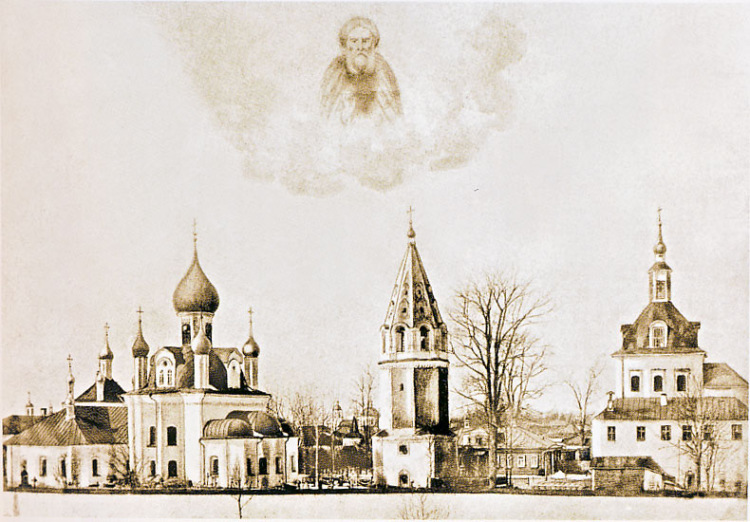
A third monastery was also established in the beginning of the 14th century, this time by St Demetrius (Dimitry) of Priluki. St Demetrius was born in Pereslavl-Zalessky in a rich merchant family but became a monk at the city's Goritsky Uspensky Monastery before founding his own monastery - the Nikolsky Monastery (now a convent) - on the shores of Lake Plescheevo. After consulting with St Sergius of Radonezh, Demetrius left Pereslavl-Zalessky to found his more famous monastery in Priluki near Vologda.
Lithuanian and Tatar Attacks
In 1372 Grand Duke Kęstutis of Lithuania launched a campaign against Moscow and as part of it besieged Pereslavl-Zalessky. The Lithuanians were unable to take the kremlin and resorted to burning down the area surrounding the kremlin before leaving. In 1374 Grand Prince Dmitry Donskoy of Moscow organised a meeting of Rus princes where they discussed, among other items, uniting against the Tatars. The city was sacked once again in 1382 when Tatar Khan Tokhtamysh unleashed his campaign of revenge following Dmitry Donskoy's victory against the Tatars at Kulikovo Field in 1380.
15th Century
Votchina of the Moscow Grand Princes
Pereslavl-Zalessky was sacked by the Tatars yet again in punitive campaigns in both 1408 and 1419. Later in the century the city became a 'votchina' estate of the Russian grand princes and as such it provided the Moscow Kremlin with fish, especially the famous breed of vendace fish - a type of freshwater whitefish found in Lake Plescheevo and known in Russian as 'ryapuskha'.
16th Century
St Daniel of Pereslavl-Zalessky
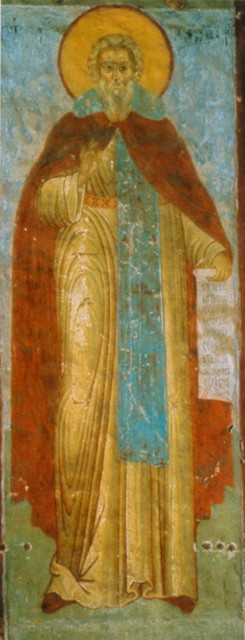
Pereslavl-Zalessky's fifth monastery - the Svyato-Troitsky Danilov Monastery - was founded in the early fifth century by the monk Daniil of the city's Nikitsky Monastery, who was also a confessor of Grand Prince Vasily III of Rus. Daniil was later canonised by the Russian Orthodox Church as St Daniel of Pereslavl-Zalessky. When Vasily's son Ivan (Ivan the Terrible) was born in 1530, a stone cathedral was constructed at the new monastery to commemorate the birth of the long-awaited heir. During the reign of Ivan the Terrible himself, several of Pereslavl-Zalessky's monasteries benefited further with the construction of new stone cathedrals.
17th Century
Time of Troubles
During the Time of Troubles the Pereslavl-Zalessky Kremlin was captured by Polish-Lithuanian interventionists in 1608 but was liberated by the army of Mikhail Skopin-Shuisky in 1609, however the much of the city was devastated in the process. Hetmat Yan Sapega, a supporter of the Second False Dmitry made an attempt to recapture the kremlin in 1611 but was unsuccessful. The city was rebuilt after the Troubles were over and the Sretensky Novodevichy Convent (the city's sixth) was established inside the kremlin in 1659. A new wooden kremlin with 12 towers was rebuilt on the earthen mounds.
Peter the Great's Play Fleet
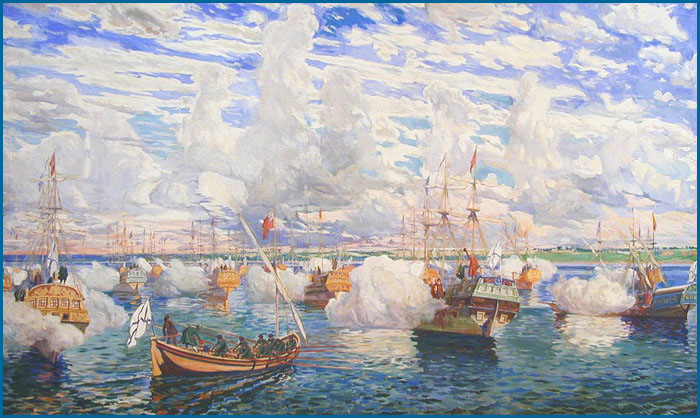
In 1688 Tsar Peter the Great, who was then still ruling alongside his half-brother Ivan V and under the regency of Sofia, started to build a "play fleet" of ships on Lake Plescheevo. His play fleet was created in 1692 and Peter had them perform a ceremonial review. His experiences on Lake Plescheevo instilled in Peter a great love of shipbuilding which would lead him to create Russia's first navy later in his reign.
18th Century
Administrative Reforms
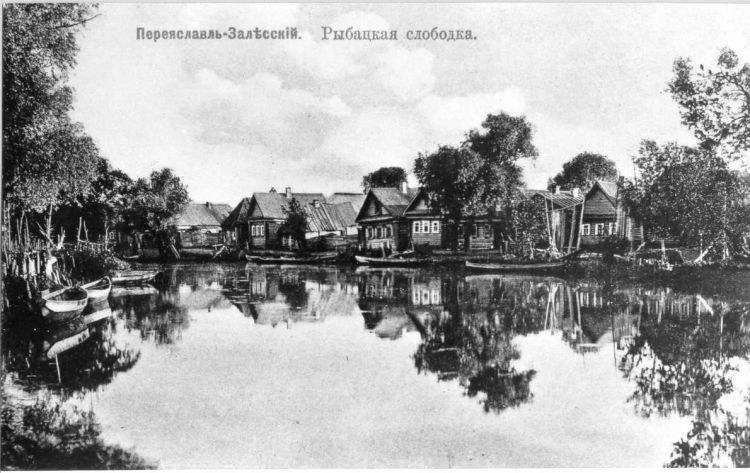
In 1708 the city became part of the Moscow Governorate and then the centre of the Pereslavl Province within the Moscow Governorate. Administrative reforms took place again in 1781 when it began a district centre within the Vladimir Viceroyalty (which became the Vladimir Governorate in 1796). In 1781 the city was also granted its own coat of arms depicting two golden 'ryapuskha' vendace fish for which the city had become famous.
In 1744 the Goritsky Uspensky Monastery was dissolved and its buildings were given over to be used as a residence for the bishop of the Pereslavl Eparchy. The eparchy was then itself dissolved in 1788 which saw the former monastery being more or less abandoned. In addition, by 1759 the old wooden kremlin had fallen into disrepair and it was decided to remove it.
19th Century
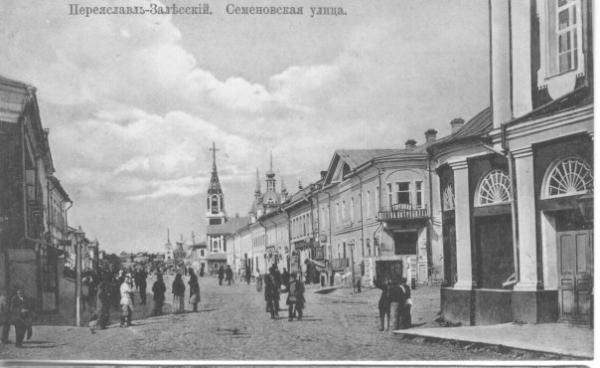
The 19th century saw Pereslavl-Zalessky being slightly overlooked in terms of communications with no direct railway line being built to connect it with Moscow. The main railway route runs to the east of the city between Aleksandrov and Rostov. This in turn led to the city remaining a quaint calm provincial city with the minimum of industrialisation.
20th Century
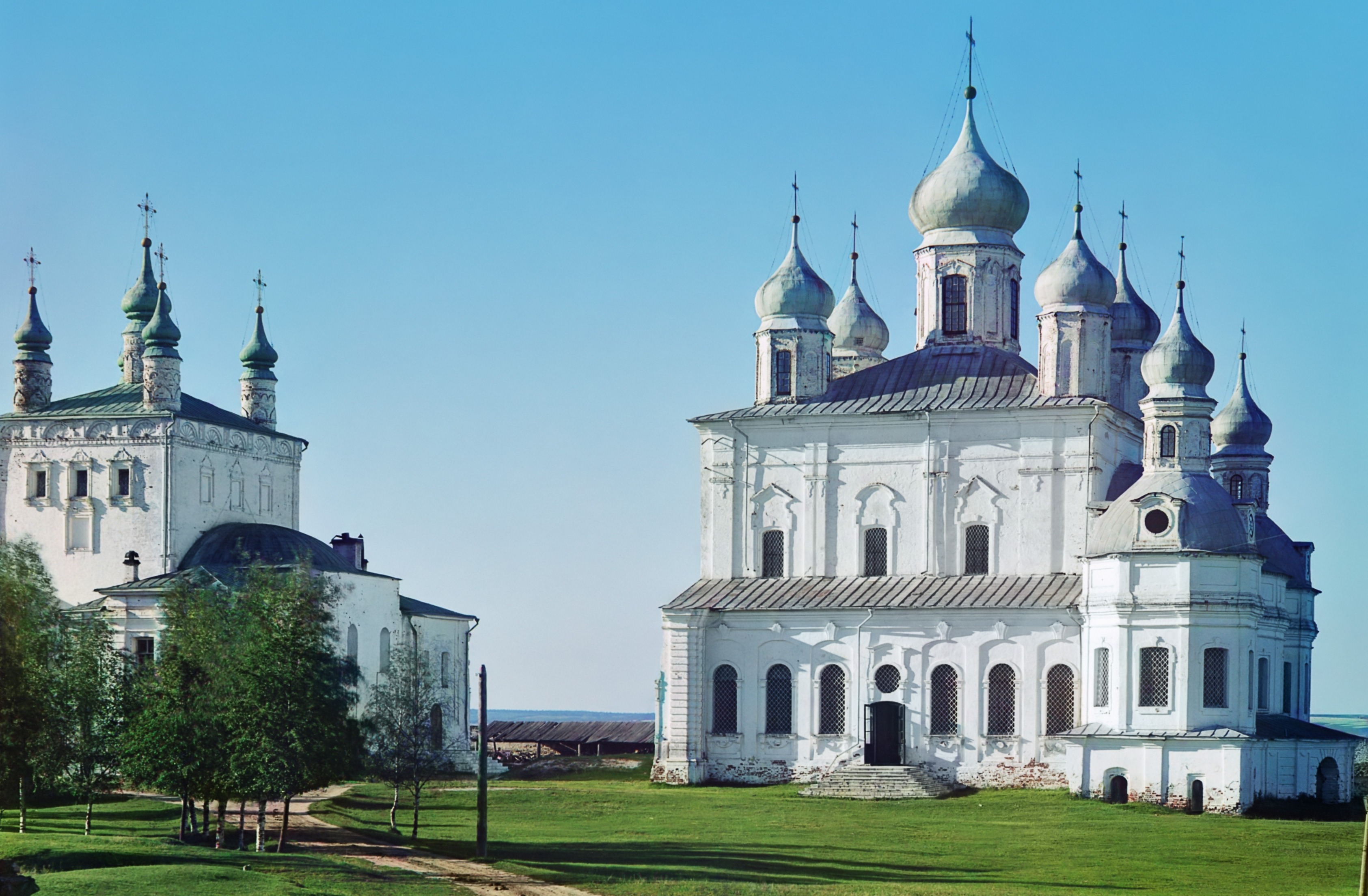
After the Russian Revolution Pereslavl-Zalessky's monasteries were closed down and in 1919 the former Goritsky Uspensky Monastery became the home of the newly-created Pereslavl-Zalessky State Historical, Architectural and Art Museum Reserve, which it remains today. In 1929 the city became the centre of the Pereslavl District of the Ivanovo Industrial Region and then from 1936 part of the Yaroslavl Region. After the fall of the Soviet Union four of the city's monasteries and convents (Feodorovsky, Svyato-Troitsky Danilov, Nikolsky and Nikitsky) were restored and reopened.


 History
History